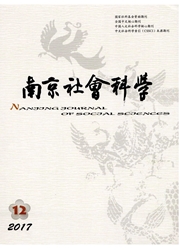

 中文摘要:
中文摘要:
本文在对文化、文化产品和文化消费的经济学特征进行具体分析的基础上,构建了文化消费的“生产供给、流通载体和消费需求(SMD)分析范式”,探讨在经济基础与上层建筑互动关系作用下扩大文化消费的机理与途径。分析表明,在经济社会发展进程中,文化消费的供给因文化产品生产要素投入组合的差异而呈现不同的特征,文化消费的需求随文化供给和收入消费结构的变化表现出不同的形态,而文化消费的流通载体则是协调供求矛盾运动的媒介和渠道。
 英文摘要:
英文摘要:
The expansion of cultural consumption is an inherent requirement for China to optimize economic structure, promote economic growth and social civilization at present. Based on a specific analysis of economic characteristics of cultural, cultural goods and consumption, this study establishes an analytical paradigm of cultural consumption from production supply, transaction market and consumption demand (SMD) , to explore the mechanisms and means of expanding cultural consumption under the interaction between economic base and superstructure. Economic analysis using the SMD paradigm shows that in the economic and social development process, the supply of cultural consumption has different characteristics because of different input combinations of factors for shaping cultural products, the demand for cultural consumption has different patterns following the changes of cultural supply, income and consumption structure, and the transaction market of cultural consumption is carrier and channel to coordinate the contradiction between supply and demand. The SMD paradigm provides an inspired approach and theoretical support for us to judge the current situation of cultural consumption and the effects of cultural consumption, and to optimize the policies of cultural consumption.
 同期刊论文项目
同期刊论文项目
 同项目期刊论文
同项目期刊论文
 期刊信息
期刊信息
